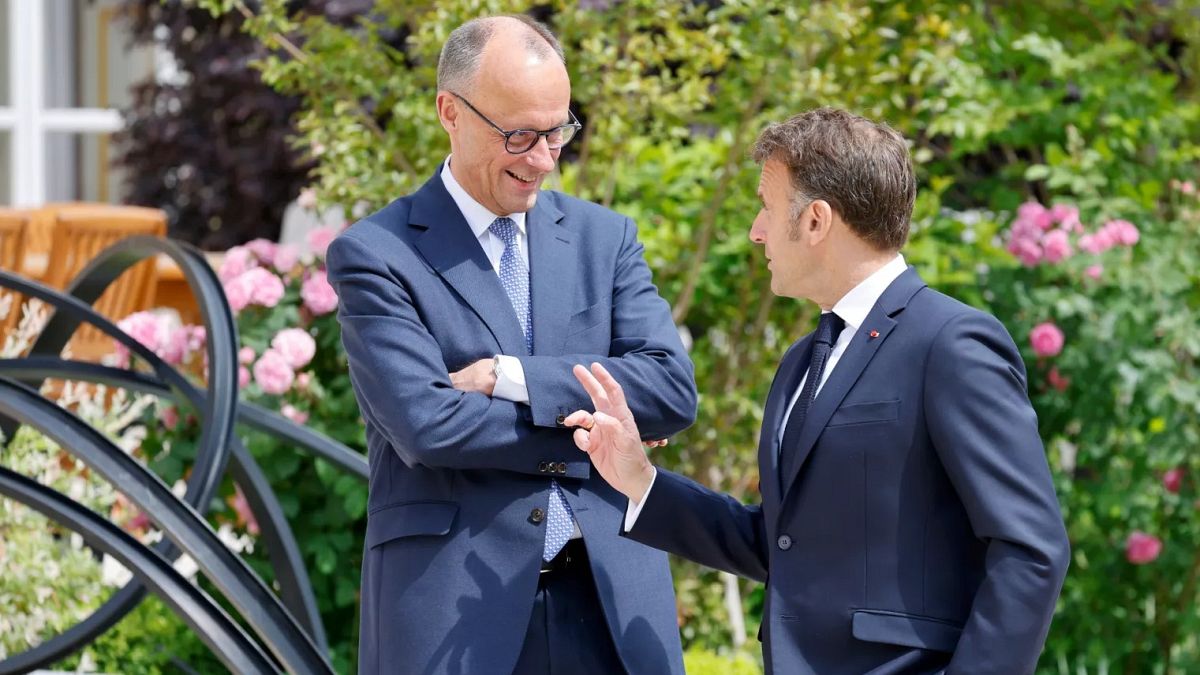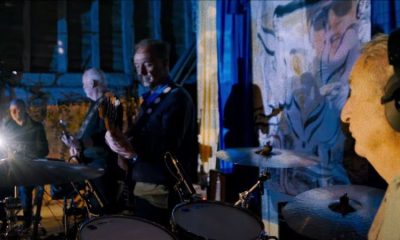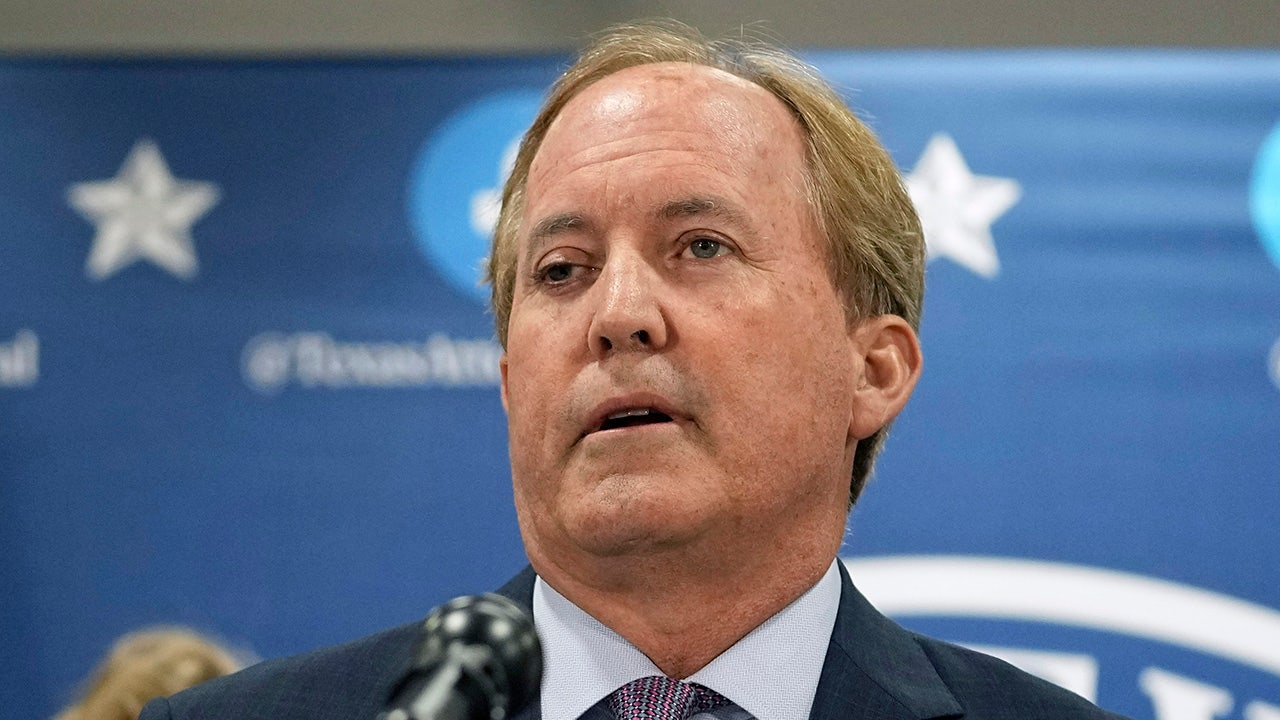Boston, MA
Gov’t Mule returns to the ‘Dark Side’ for Boston tour stop

You can’t see Pink Floyd play “Dark Side of the Moon” for its 50th anniversary, since Floyd leaders Roger Waters and David Gilmour still hate each other too much. But you can see it done proud Friday at the Leader Bank Pavilion by Gov’t Mule, whose leader Warren Haynes is both a jam-band icon and a voracious music fan.
“My musical taste goes all over the map,” he said this week. “It started with soul music, my earliest influences were James Brown and Otis Redding. But I was lucky to have two older brothers, who were not only music nuts but record collectors as well. The first time I heard Pink Floyd was ‘Dark Side’ in 1973, and I loved it so much that I had to go backward and hear the rest. As with all the music that we choose to be influenced by, it’s timeless.”
The first “Dark Side of the Mule” show happened at the Orpheum in Boston: It was Halloween in 2008, and the band honored its annual tradition of a surprise cover set. “We only meant to do it that one time, but there was demand and now we’re bringing it back for the anniversary. We have so much reverence for that music that we try to keep the vibe of the original; song by song we make the decision of how far we’re going to stray. On this tour we’re opening it up more to interpretation.” Along with a good 90 minutes of Floyd, including all of ‘Dark Side’ and more, they’ll play an intro set of Mule originals.
Haynes says he’s met Roger Waters once, when Haynes was in the Allman Brothers Band and Eric Clapton joined them onstage; Clapton’s friend Waters was hanging out afterwards. “We also were both part of a tribute to Levon [Helm] a few years later. But I’ve never spoken to him or David Gilmour about what they might think of what we’re doing. I’m sure it would be a pretty strange issue.”
The Floyd shows are just one stretch of a long run of touring through this year. Future Mule shows will focus more on the new album “Peace…Like a River,” an epic one even by their standards. Full of long and ambitious tracks, the album was recorded in tandem with a blues disc that they already released and toured last summer.
“On paper I suppose that sounds a little strange and daunting, but it turned out to really be the opposite. We’d start at noon with the ‘Peace’ songs and work till nine at night, then we’d have some dinner, go to the small room and play blues. That was our way of shutting our brains off and playing for fun.” Most of the ‘Peace’ songs were written during shutdown. “That was one good thing about it, the ability to settle down and write a ton of music. We wanted to bring back the idea of longer, more complex arrangements, and part of the mission was to have songs that sound like they go together, but don’t sound like each other.”
In fact the album often brings their proggy, Floyd-like side into play. “Gov’t Mule started as a side project [from the Allman Brothers], and we thought we were only going to make one record. At the time it was our notion to being back the improvisational rock trio. Once it became apparent that we were going to be a real band, we started bringing out more of our influences. So here it is, 12 albums later and we’re still painting in colors we haven’t used in the past.”
For tickets and info, visit livenation.com

Boston, MA
Alex Cora explains why Boston Red Sox’ Trevor Story has struggled

BOSTON — Red Sox shortstop Trevor Story is on pace to play 151 games.
But will he hit enough to justify playing nearly every day for the rest of the season?
It hasn’t gone well for Story so far this year. Meanwhile, 22-year-old shortstop Marcelo Mayer, Baseball America‘s No. 8 overall prospect, is making a case at Triple-A Worcester with his OPS up to .819 after a slow start to the season.
Story entered Saturday with the 22nd worst OPS (.627) in the major leagues. He was batting .234 with a .276 on-base percentage and .351 slugging percentage in 44 games (181 plate appearances). He has only eight extra-base hits (six homers, two doubles).
“Physically he feels great,” manager Alex Cora said before Boston’s game against the Braves on Saturday. “And he worked his (expletive) off in the offseason to get to this point. He wanted to play a lot of games, more than 150. And I think he’s on pace to do that. But obviously I gotta be smart, too. Not only with the production, but also the body.”
Saturday marked Story’s 45th game, the most games he has played in a season since 2022. He missed most of 2023 following elbow surgery, then was limited to 26 games last year after fracturing the glenoid bone in his left shoulder during the opening road trip.
“All the metrics, all the information that we have — the bat speed is there, his hands are where they’re supposed to be. Everything looks OK,” Cora said. “The only thing we’re not doing right now is hitting the ball forward.”
Story is the bottom 10th percentile among major league hitters in chase percentage (36.7%), strikeout percentage (30.9%), walk percentage (3.9%) and squared-up percentage (17.9%).
Cora said the Red Sox felt better about Story’s at-bats Friday when he went 1-for-4 with an RBI single in the ninth. Story also has a walk and single in Saturday’s game so far.
“Just missing his pitches,” Cora said. “That’s the bottom line. I know he’s swinging a lot but he’s getting pitches in the zone and he’s fouling them off. And after that, they (pitchers) get to work.”
Cora said Story also hasn’t taken advantage even after he gets ahead in the count.
“2-0, 3-1, misses his pitches and then they bury him,” Cora said. “Early on, he wasn’t doing that. He was actually connecting and hitting the ball hard. And lately it hasn’t happened.”
Story’s 47.8% hard hit percentage is in the 73rd percentile among major league hitters. He’s also been an above-average baserunner. But all his other advanced offensive stats on Baseball Savant are between the poor and average scale (mostly poor).
Cora said it’s important for Story to make in-game adjustments.
“When he’s really good, he’s hitting the fastball. We know that,” Cora said. “And one thing that he did his first year (with the Red Sox in 2022), he was driving the ball to right-center. And I always talk about hitting the ball hard the other way. And then whatever soft is in the zone, he was able to pull.”
Story has struggled mightily on fastballs this season, going 18-for-87 (.207) with a .218 slugging percentage and just one extra-base hit (double).
Story’s best years offensively were 2018-21 — and he was able to feast on fastballs each of those seasons.
vs. fastballs:
- 2018: .306 batting average, .572 slugging percentage.
- 2019: .298 batting average, .570 slugging percentage.
- 2020: .304 batting average, .507 slugging percentage.
- 2021: .273 batting average, .498 slugging percentage.
“Right now he’s fouled them (fastballs) off,” Cora said. “Yesterday was a good sign. He stayed on a good pitch by Chris (Sale). Fouled it off but he stayed with it. And then the base hit up the middle, that was good.”
As Cora mentioned, the Red Sox feel OK with Story’s bat speed — but he ranks in the 28th percentile in that category (70.6).
Cora was asked how long the Red Sox can continue on this path with Story if he’s not producing.
“Right now, he’s not the only one struggling,” Cora said. “KC (Kristian Campbell) has struggled for 50 at-bats and we’re not talking about that. It’s a lot. Like right now, I think offensively we got some holes and it’s not because they’re bad players or bad hitters. They’re just going through a stretch right here. And we just have to get ‘em going. Start doing the little things, hit the ball the other way, get your walks. And if we start doing that as a group, we’re gonna be better.”
Boston, MA
Boston Celtics core should be remembered fondly after shakeup|Souichi Terada

NEW YORK — The sting of this Celtics season is going to last a while, and not just because they were embarrassed by the Knicks in Game 6 to end their season. Jayson Tatum’s ruptured right Achilles tendon casts question marks on the organization going forward. Considering the C’s were already set for a transformational offseason, there’s a lot of uncertainty going forward.
But, for now, Celtics fans should reflect back on this two-year group. They were special. They accomplished their goal by winning the 2024 NBA title. They’re already immortalized for that. And, when looking back at this core, they should be remembered fondly and in a positive light.
Yes, there were frustrating moments. This probably isn’t even a conversation — at least for now — if the Celtics didn’t blow Games 1 and 2 to the Knicks. Old bad habits kicked in and the C’s didn’t look like reigning champions. That slimmed their margin for error, then once Tatum went down, this series was going to be difficult to win. Ultimately, the Celtics couldn’t accomplish their lofty goal of going back-to-back.
Most importantly, appreciate what this group did: They maximized their talent. That doesn’t always happen. There was no bickering or moaning about touches, playing time or whatever. Plenty of NBA teams are fractured because of individualistic motives. That’s part of being in the league. C’s fans are familiar with that when a promising 2018-19 season ended in a dud, also during the second round.
There was none of that drama over the past two seasons — that should be appreciated, too. This group realized the opportunity in front of them with a loaded roster, so all they did was work toward getting better. All you can do in this league is to put yourself in a position to win, and the Celtics did that for two seasons.
“I just love playing with the guys that we have in that locker room,” Derrick White said. “Just a great group of guys that compete at a high level. Off the court, we just had a lot of fun. And I think that’s just what I’ll probably the most proud of: is just being able to say that I put on a Boston Celtics uniform with some amazing group of people.”
The Celtics weren’t perfect. They lost in the second round to a Knicks team that executed when it mattered, and for that, the C’s only have themselves to blame. Then their injury luck turned for the worst as Tatum going down like he did also took an emotional toll. But the Knicks deserved to win since that’s what they did, taking four out of six games against the heavily-favored Celtics.
So, the Celtics will process how this season went over the next few days ahead of the offseason. Then the front office will inevitably get to work, whether that’s the draft, free agency, trades or whatever tool they can muster to upgrade the roster. There will likely be departures to key guys since that’s how the salary cap works. But this group was special — Banner No. 18 is proof of that.
“I told the guys in the locker room, one of the honors of my life was to be able to coach this group of guys,” C’s coach Joe Mazzulla said. “So you go down the list, every one of these guys is a champion, a warrior and they’ve done a lot of great things in this league. And it’s an honor to be able to share the locker room with them and be next to them on the court and be in the arena with them. So, I’m grateful for that.”
Boston, MA
Insider: Boston Bruins have interviewed ‘about 15 guys’ for coaching vacancy

It sounds like Don Sweeney and Cam Neely are doing their diligence as they search for the next coach of the Bruins.
On SportsNet’s “32 Thoughts” podcast, NHL insider Elliotte Friedman said the buzz around the league is that just about everybody has been on Boston’s radar.
“I’ve heard they’ve interviewed about 15 guys,” Friedman said. “I asked someone, ‘Who do you think Boston has interviewed?’ The response was, ‘Who haven’t they interviewed?’”
Friedman then shared the names of some of the candidates.
“(Marco) Strum,” Friedman said. “I assume (Jay) Leach. I think (Jeff) Halpern and (Jeff) Blashill. I think they’re also in on Mitch Love. Joe Sacco. But I think there’s more and more.”
Interim coach Sacco and Bruins assistant Leach are obvious interview candidates, while some of the other names are interesting, too.
Sturm, Boston’s hero in the 2010 Winter Classic, has been a Kings assistant since 2018. Halpern has won a pair of Stanley Cups as a Lightning assistant, while Blashill spent seven seasons coaching the Red Wings (2015-22) before his dismissal. Love is a Capitals assistant who is also rumored to be on Pittsburgh’s radar.
When Sweeney spoke after the NHL Draft lottery earlier this month, he was pleased with the feedback he’d been getting from candidates.
“This is an exciting opportunity for coaches to be interviewing for this position, and that’s the indication that they would be very excited about maybe being the head coach of the Boston Bruins,” Sweeney said. “That’s the first and foremost thing that’s come across, happy to be part of the selection of being interviewed, and more fortunate they are.
“I think they’re starting to gather information on the roster and the players that we have in place. And, first question people ask in terms of how healthy we’re going to be and the return to that full health so that players, that they expect impact (from) will be back to do what they do. But the overriding excitement as we are to turn a page and come to the decision that we’ve got the right guy in place.”
-

 Austin, TX1 week ago
Austin, TX1 week agoBest Austin Salads – 15 Food Places For Good Greens!
-

 Technology1 week ago
Technology1 week agoNetflix is removing Black Mirror: Bandersnatch
-

 World1 week ago
World1 week agoThe Take: Can India and Pakistan avoid a fourth war over Kashmir?
-

 News1 week ago
News1 week agoReincarnated by A.I., Arizona Man Forgives His Killer at Sentencing
-

 News1 week ago
News1 week agoWho is the new Pope Leo XIV and what are his views?
-

 Politics1 week ago
Politics1 week agoDepartment of Justice opens criminal investigation into NY AG Letitia James
-

 World1 week ago
World1 week agoNew German chancellor aims for stronger EU ties with France and Poland
-

 News1 week ago
News1 week agoJudge Orders Release of Rumeysa Ozturk, Tufts Student Detained by ICE



















